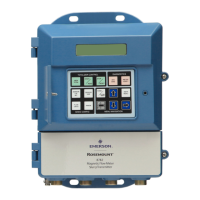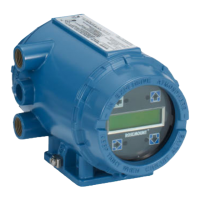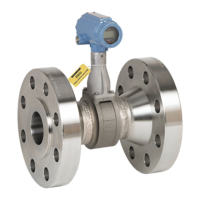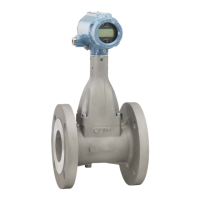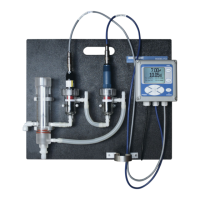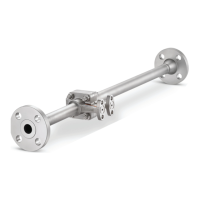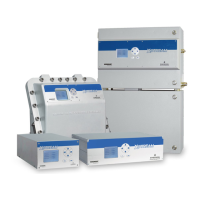Quick Start Guide
7
March 2016
1.3 Electrical considerations
Before making any electrical connections to the Rosemount 8750W, consider
national, local and plant electrical installation requirements. Be sure to have the
proper power supply, conduit, and other accessories necessary to comply with
these standards.
Both remotely and integrally mounted transmitters require external power so
there must be access to a suitable power source.
1.4 Environmental considerations
To ensure maximum transmitter life, avoid extreme temperatures and excessive
vibration. Typical problem areas:
high-vibration lines with integrally mounted transmitters
tropical/desert installations in direct sunlight
outdoor installations in arctic climates
Remote-mounted transmitters may be installed in the control room to protect
the electronics from the harsh environment and to provide easy access for
configuration or service.
Table 2. Electrical Data
Field mount transmitter
Power input
90–250VAC, 0.45A, 40VA
12–42VDC, 1.2A, 15W
Pulsed circuit
Internally powered (Active): Outputs up to 12VDC, 12.1mA, 73mW
Externally powered (Passive): Input up to 28VDC, 100mA, 1W
4-20mA output circuit
Internally Powered (Active): Outputs up to 25mA, 24VDC, 600mW
Externally Powered (Passive): Input up to 25mA, 30VDC, 750mW
Coil excitation output 500mA, 40V max, 9W max
Wall mount transmitter
Power input
90–250VAC, 0.28A, 40VA
12–42VDC, 1A, 15W
Pulsed circuit Externally powered (Passive): 5–24VDC, up to 2W
4-20mA output circuit
Internally powered (Active): Outputs up to 25mA, 30VDC
Externally powered (Passive): Input up to 25mA, 10–30VDC
Coil excitation output 500mA, 40V max, 9W max
Sensor
(1)
1. Provided by the transmitter.
Coil excitation input 500mA, 40V max, 20W max
Electrode circuit 5V, 200uA, 1mW
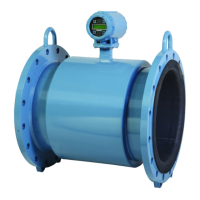
